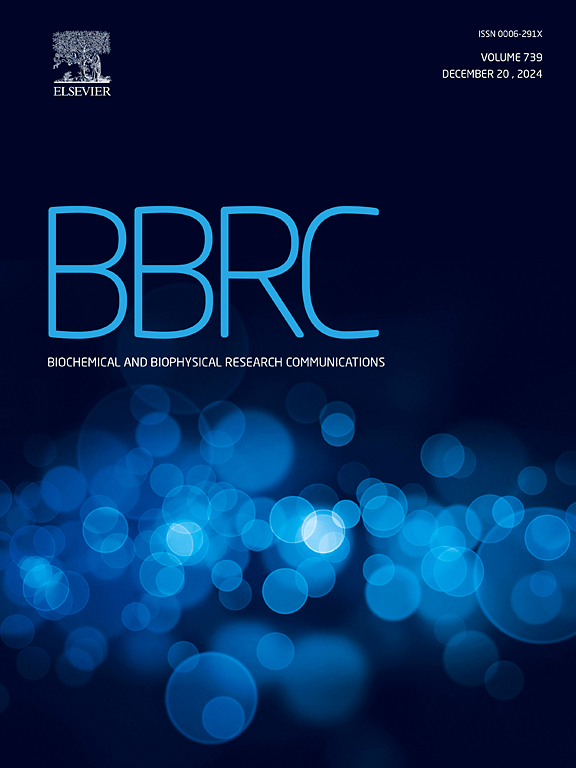Thermal study of plants in a dynamic environment using thermovision
IF 2.2
3区 生物学
Q3 BIOCHEMISTRY & MOLECULAR BIOLOGY
Biochemical and biophysical research communications
Pub Date : 2025-06-22
DOI:10.1016/j.bbrc.2025.152246
引用次数: 0
Abstract
We examined the effect of light-induced heating of leaves in wild-type (Col-0) and tmm-1 Arabidopsis plants. The results showed that the tmm-1 mutant exhibits accelerated cooling of rosettes in response to changes in light intensity, as demonstrated by thermal imaging measurements. This is evident in the time constants determined for temperature kinetics, which were reduced during the transition from light to dark. Our findings indicate that these dynamics can be reliably assessed under various light conditions. Measurements of gas exchange showed that stomatal conductance, transpiration rate, and net CO2 assimilation rate were increased in the tmm-1 mutant. Furthermore, fluorescence analysis revealed that the tmm-1 mutant exhibited an increased ratio of total energy dissipation to the number of active reaction centers, as well as higher average absorption. We also observed that the performance index (PIABS) was reduced compared to Col-0. Nevertheless, the clustering of stomata did not affect the maximum quantum yield of PSII. Our results demonstrate that the maintenance of lower leaf temperatures and the greater cooling capacity in plants with clustered stomata positively affects overall photosynthetic performance.
利用热视觉对动态环境中植物的热研究
我们研究了野生型(Col-0)和tmm-1拟南芥叶片的光致加热效应。结果表明,tmm-1突变体对光强变化的响应加速了莲座的冷却,正如热成像测量所证明的那样。这在为温度动力学确定的时间常数中是明显的,它在从光到暗的转变期间减少了。我们的研究结果表明,这些动态可以在各种光照条件下可靠地评估。气体交换测量结果表明,tmm-1突变体的气孔导度、蒸腾速率和净CO2同化速率均有所增加。此外,荧光分析显示,tmm-1突变体的总能量耗散与活性反应中心数之比增加,平均吸收也更高。我们还观察到,与Col-0相比,性能指数(PIABS)有所降低。气孔的聚类不影响PSII的最大量子产率。我们的研究结果表明,维持较低的叶片温度和较大的冷却能力对具有集群气孔的植物的整体光合性能有积极的影响。
本文章由计算机程序翻译,如有差异,请以英文原文为准。
求助全文
约1分钟内获得全文
求助全文
来源期刊
CiteScore
6.10
自引率
0.00%
发文量
1400
审稿时长
14 days
期刊介绍:
Biochemical and Biophysical Research Communications is the premier international journal devoted to the very rapid dissemination of timely and significant experimental results in diverse fields of biological research. The development of the "Breakthroughs and Views" section brings the minireview format to the journal, and issues often contain collections of special interest manuscripts. BBRC is published weekly (52 issues/year).Research Areas now include: Biochemistry; biophysics; cell biology; developmental biology; immunology
; molecular biology; neurobiology; plant biology and proteomics

 求助内容:
求助内容: 应助结果提醒方式:
应助结果提醒方式:


